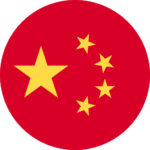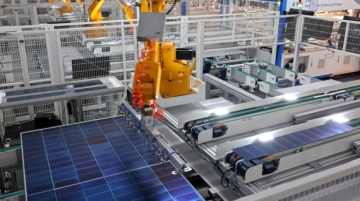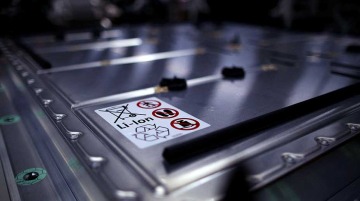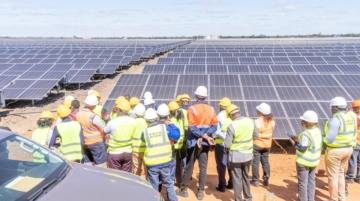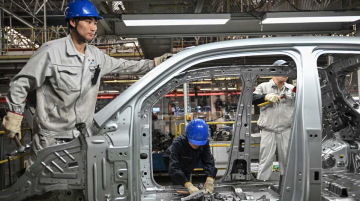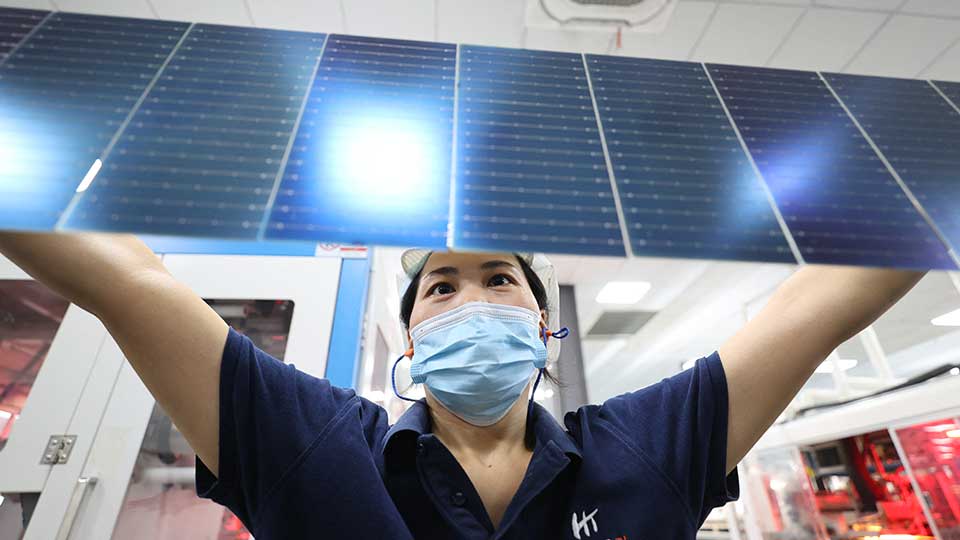
Three Chinese companies are pouring more than half a billion dollars into Ethiopia’s nascent solar manufacturing sector, underscoring Beijing’s growing role in shaping Africa’s clean energy future.
Shanghai-listed CSI Solar, majority-owned by Canadian Solar Inc., plans to invest $250 million in a new plant for solar modules and energy storage. Two other Chinese firms — Hainan Drinda New Energy Technology Co. and Toyo Solar Manufacturing One Member Plc — are also developing manufacturing projects in the East African nation.
Ethiopia has taken bold steps to promote green mobility and expand renewable energy generation. The arrival of these Chinese firms aligns closely with Addis Ababa’s ambitions for energy independence and industrial growth.
Technology Transfer And Skills Development
While solar manufacturing is both energy- and water-intensive, Dereje Woregna, the immediate former chief executive of the Ethiopian Solar Energy Development Association, said the influx of Chinese investment could serve as a powerful catalyst for Ethiopia’s broader industrialization goals.
“These investments are anticipated to go beyond basic assembly, fostering technology transfer, and contributing to skills development within the local workforce, as seen in broader Chinese manufacturing investments in the country,” he said.
Ethiopia joins countries such as Egypt, Kenya, and Nigeria, where solar panel manufacturing is beginning to take shape. Nicola Licata, a Shanghai-based senior project manager specializing in ESG and traceability, said several factors are driving Chinese firms to set up operations in African markets.
While serving local demand is one objective, she suggested that the move could also be a strategy to bypass tariffs and reach the U.S. market.
“For now from my perspective (serving primarily U.S., the EU, and Australian clients) the only incentive to even explore African-made cells or modules is U.S. tariff policy-driven, especially given the new 50% tariffs on India precluding sourcing from there and reinforcing the saying ‘India produces for India,’” she said.
For Woregna, however, the significance of the new solar factories extends far beyond exports. He believes they could generate thousands of direct and indirect jobs and lay the groundwork for a more sophisticated domestic value chain.
“This helps diversify our economy, reduce reliance on finished solar product imports, and can position Ethiopia as a potential hub for solar technology in East Africa. However, it’s crucial that these partnerships are structured to ensure genuine knowledge transfer and create sustainable, high-value employment opportunities for Ethiopians, moving beyond primary assembly to more technical roles in design, R&D, and management,” he said.
Reliance on Chinese Solar Imports
But before Ethiopia and other African nations can sustainably manufacture solar products for their own markets, Licata cautioned that reliance on Chinese imports will remain inevitable due to current supply chain realities.
“Even if African countries can produce modules or cells, their factory hardware all comes from China, including the upstream raw materials like silica wafer,s which go into cells,” she said.
Back to water and energy, Ethiopia’s abundant resources could support solar cell production, but Woregna noted that sustainable management will be critical. “Obviously, any large-scale solar manufacturing venture would need to conduct thorough feasibility studies and potentially invest in efficiency and recycling technologies,” he said.
The Grand Ethiopian Renaissance Dam (GERD)
In addition, the country has significant renewable energy potential, particularly hydropower, solar, and wind, and ambitious targets to significantly expand generation capacity. The recently launched Grand Ethiopian Renaissance Dam (GERD), for instance, is a game-changer for the country’s energy outlook, with industrial parks now being developed with dedicated infrastructure to benefit from the dam.
“However, ensuring a consistent and reliable supply of competitively priced electricity for large-scale, energy-intensive manufacturing remains a critical area of focus. While industrial electricity tariffs are established, the reliability of the grid has been a challenge historically, though improvements are ongoing,” Woregna adds.
Peace and Stability in Amhara, Tigray, and Oromia
Despite these milestones, he warned that the solar sector’s progress also hinges on peace and stability — conditions that remain fragile after nearly four years of internal conflict.
“The security challenges in regions like Amhara, Tigray, and Oromia create substantial risks, affecting everything from the movement of goods to investor trust and the safety of people and property. Addressing these fundamental issues is therefore essential to building the secure and stable foundation needed for progress,” said Woregna.
He emphasized that sustaining manufacturing operations depends on peace and the protection of vital infrastructure.
“What I find utterly baffling is the relative lack of international media attention on the horrific war that has now afflicted Ethiopia for almost four years. The scale of devastation, the systematic destruction of our society, and the tragic loss of so many young lives,” he said.
Ultimately, Woregna said, Ethiopia’s success in attracting and retaining major solar investments will depend on stability and predictability adding that “the overarching success of such manufacturing initiatives is intrinsically linked to a stable and predictable operating environment.”

